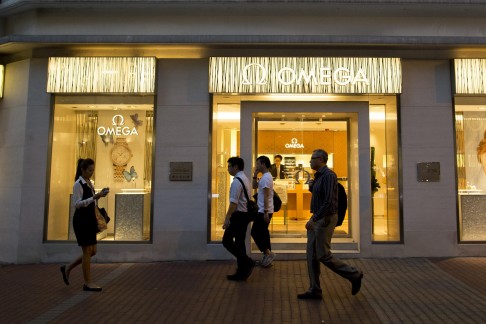Bright future for modern warehouses
Retail boom and improvements in transport network are driving the demand for modern warehouses in HK as traditional godowns are out

Warehousing has probably never been the most sought-after of the property sectors, and talk of rack space and pallets usually induces glassy-eyed boredom in all but the most involved participants.
This is all about to change. The forces now acting on this long-overlooked use of real estate are transformational, and the shrewder investors have already recognised this.
As any student of the science will tell you, distribution logistics comes about because the time, place and quantity of production vary from those of consumption.
What is changing is the nature of that consumption as the internet alters the traditional relationship between the consumer and the retailer, and between the retailer and the distributor.
The traditional tasks of order processing, warehousing and transport have therefore taken on a new dimension as fewer goods are shipped to wholesalers and retailers and more are sent directly to homes and offices.
Warehouses are now "rapid flow-through [or high-velocity] distribution centres" offering a much wider variety of value-added services, a long way from the traditional "storage facility" of the past.
Demand is now for modern warehouses, and our traditional godowns in many cases no longer fit the bill.
Enter the funds. Since 2003, the value of modern warehouses in Hong Kong has jumped 440 per cent, with prices now averaging HK$3,200 per square foot, compared with a gain of 400 per cent in the value of traditional godowns.
The importance of an unprecedented retail boom, where sales have risen 186 per cent from 2003 to 2013, has provided much of the impetus for this growth.
International fashion retailers need prime logistics space for packaging and distribution, and security levels need to be high for storage and transport.
Hong Kong, with its more efficient customs, is often a preferred base from which to serve a wider network in southern China.
The rise of suburban retailing has also created more demand for logistics centres and warehouses in the New Territories.
Meanwhile, traditional logistics users such as air-freight operators, express-cargo operators and freight forwarders continue to be in clusters around transport hubs.
Other factors have also contributed to rising values, including Hong Kong's improving transport infrastructure, as road, rail, sea, river and air links continue to multiply.
One of the biggest growth stories of recent years has been air freight, and Chek Lap Kok was the busiest airport in the world by international freight last year, beating even Memphis in Tennessee, the home of FedEx Express.
Although air freight represented only 1.3 per cent of cargo throughput by tonnage last year, it contributed 37.4 per cent in terms of value.
In the broader Pearl River Delta, development of the aviation industry has been hampered by narrow air corridors, restrictions on flight altitudes, military control of air space and inefficient airports.
This is changing, though, as both Guangzhou Baiyun and Shenzhen Baoan international airports have doubled their capacity in recent years, while Hong Kong International Airport is running at close to saturation.
The shortage of zoned land and the lack of a mechanism that would make the development of redundant buildings commercially viable have also done their bit to accelerate the rise in values.
In fairness, the first issue is being addressed with new areas set aside in the northwest New Territories, such as the Hung Shui Kiu development area near the Shenzhen Western Corridor, which could provide about 62 hectares of land with an estimated plot ratio of five. Construction could start as early as 2019.
Individual logistics-related sites have also been identified, and four have been tendered in Kwai Chung/Tsing Yi.
Elsewhere, two sites in Tuen Mun West have been earmarked for logistics use, with a total of 2.5 million square feet of potential space and estimated completion in 2019.
Clearly, the sector has a bright future.
Simon Smith is head of research and consultancy services at Savills
